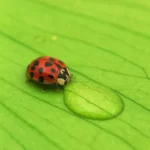The concept of fall damage is a familiar one in the world of video games, where characters often suffer consequences when descending from great heights. This raises an intriguing question: Do bugs, those miniature acrobats of the natural world, experience fall damage in real life? In this exploration, we delve into the fascinating realm of insects and their encounters with gravity, aiming to uncover whether the rules of fall damage observed in virtual worlds apply to our six-legged counterparts in reality.
The Physics of Fall Damage
In the physical world, fall damage occurs due to the impact force generated when an object, including living organisms like insects, descends from a certain height. The force of impact is influenced by factors such as the mass of the falling object, the distance fallen, and the medium through which it falls. In the case of insects, their lightweight bodies and small size can significantly affect how they experience and withstand falls. Understanding the physics behind fall damage sets the stage for exploring how insects navigate the challenges of gravity and potential impacts during descents.
Size Matters: How Insect Size Affects Fall Impact
The size of an insect plays a crucial role in determining the impact of a fall. Smaller insects, with lower mass and surface area, experience less air resistance during a fall, potentially reaching higher terminal velocities. Surprisingly, this can work to their advantage. Some small insects may reach a point where air resistance equals the force of gravity, creating a sort of “parachute effect” that slows their descent. On the other hand, larger insects may experience more air resistance, reducing their terminal velocity and minimizing the impact force upon landing. Exploring how insect size influences fall impact provides insights into the varied strategies these tiny creatures employ to navigate the challenges of descending from different heights.
Adaptations to Minimize Fall Impact
Insects have evolved a myriad of adaptations to minimize fall impact, allowing them to survive descents that might seem perilous to their miniature frames. Some insects exhibit behaviors such as spreading their wings or extending their legs to increase air resistance and slow their fall. Additionally, certain species have evolved specialized body structures, like elongated limbs or lightweight exoskeletons, that act as natural shock absorbers upon landing. These adaptations showcase the remarkable resilience and ingenuity of insects in mitigating the potential damage associated with falls. By minimizing the impact force, insects demonstrate their ability to navigate a world where gravity poses unique challenges.
Real-Life Examples of Insects Surviving Falls
Nature is replete with instances where insects showcase their ability to survive falls from considerable heights. Certain species of ants, for example, are known for intentionally jumping from vegetation when threatened. These ants spread their bodies to create a parachute effect, slowing their fall and landing relatively unharmed. Similarly, some spiders, equipped with silk-producing spinnerets, release silk threads to create a dragline, reducing their fall speed and enabling a safe landing. These real-life examples underscore the resourcefulness of insects in adapting to the challenges of descending from various heights, further emphasizing their capacity to navigate the physics of fall damage.
Conclusion
In the intricate dance between insects and gravity, the question of fall damage unveils a world of adaptations and survival strategies. As we explore the physics of fall impact and the influence of insect size, it becomes evident that these tiny beings have evolved remarkable mechanisms to endure descents that would challenge much larger organisms. Real-life examples of insects gracefully navigating falls highlight the resilience and ingenuity embedded in their biology. Whether intentionally jumping or utilizing silk threads as safety lines, insects have found ways to defy gravity’s potential consequences. The world of insects, far from being a miniature imitation of ours, is a testament to the incredible diversity of life and the myriad ways in which organisms conquer the challenges presented by the natural forces that govern our planet.




